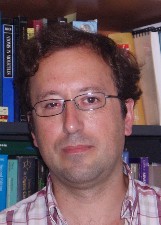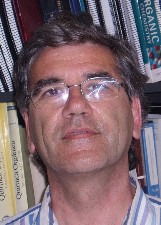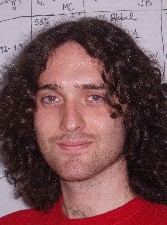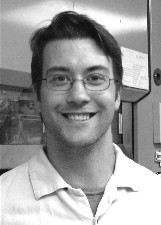Org. Synth. 2009, 86, 70
DOI: 10.15227/orgsyn.086.0070
PREPARATION OF (S)-4-ISOPROPYL-N-PROPANOYL-1,3-THIAZOLIDINE-2-THIONE
Submitted by Erik Gálvez, Pedro Romea, and Fèlix Urpí
1.
Checked by John C. Jewett and Viresh H. Rawal.
1. Procedure
A. (S)-4-Isopropyl-1,3-thiazolidine-2-thione (1). A 500-mL single-necked round-bottomed flask equipped with a magnetic stir bar and a 250-mL pressure-equalizing addition funnel fitted with a Y-connector joint with one line fitted with a nitrogen inlet adaptor and the other with a rubber septum is charged with (S)-valinol (10.32 g, 0.10 mol, 1.0 equiv, Note 1), followed by ethanol (30 mL, Note 2) and carbon disulfide (18 mL, 0.26 mol, 2.6 equiv) (Notes 3, 4). The addition funnel is flushed with nitrogen and charged with a 2.25 M KOH (15.2 g, 0.27 mol, 2.7 equiv) in 1:1 EtOH/H2O solution (120 mL), which is added dropwise at room temperature over 15-20 min. The addition funnel is replaced by a Graham condenser fitted with a nitrogen adaptor, and the reaction mixture is stirred and heated at reflux for 72 h under a nitrogen atmosphere (Notes 5, 6). After cooling, the volatiles are removed with a rotary evaporator (Notes 7, 8). The resulting liquid is acidified with 0.5 M aqueous HCl (550 mL), added slowly at room temperature, and the mixture is transferred to a 1-L separatory funnel. The slightly acidic mixture is extracted with CH2Cl2 (3 × 100 mL). The combined organic layers are dried over 5 g of MgSO4, then vacuum filtered (water aspirator, ~20 mmHg) through a cotton plug into a side-arm flask. The solvent is removed with a rotary evaporator to give 14.92-15.05 g (92-93% yield) of (S)-4-isopropyl-1,3-thiazolidine-2-thione (1) as a yellowish solid (mp 68-69 °C), which is used in the next step without further purification (Notes 7, 9).
B. (S)-4-Isopropyl-N-propanoyl-1,3-thiazolidine-2-thione (2). An oven-dried three-necked 250-mL round-bottomed flask equipped with a magnetic stir bar is charged with (S)-4-isopropyl-1,3-thiazolidine-2-thione (1) (8.08 g, 50.0 mmol, 1.0 equiv). The necks are fitted with a low temperature thermometer (with an adaptor), nitrogen line, and a rubber septum. The flask is flushed with nitrogen, and charged with anhydrous THF (33 mL, Note 10). The resulting solution is cooled in a liquid nitrogen-ethyl acetate bath (-83 °C bath temperature; -78 °C internal temperature) and treated with a 1.52 M solution of n-BuLi in hexanes (36.5 mL, 55.5 mmol, 1.1 equiv; Note 11), added dropwise by syringe over 25 min so as to keep the internal temperature below -70 °C. After 15 min, the heterogeneous solution is treated with propanoyl chloride (5.50 mL, 63.5 mmol, 1.3 equiv; Note 12), added dropwise by syringe over 10 min, keeping the internal temperature below -70 °C. The resulting clear solution is stirred for 5 min, the cold bath is removed and the solution is allowed to warm to room temperature and then stirred for 1.5 h. During this time, the solution becomes dark yellow/orange, and solids precipitate. The reaction mixture is cooled with an ice-water bath and then quenched with a saturated solution of NH4Cl (20 mL) and water (50 mL). The resulting mixture is transferred to a 500-mL separatory funnel and extracted with CH2Cl2 (3 × 100 mL). The combined organic layers are dried over 5 g of MgSO4 then vacuum filtered (water aspirator, ~20 mmHg) through a cotton plug into a side-arm flask. Concentration of the filtrate with a rotary evaporator gives a bright yellow oil (Note 7). This residue is loaded on a column (6.5-cm diameter glass column) of silica gel (ca 150 g; Note 13) and eluted with 1:1 CH2Cl2/hexanes (2 L, Note 14) to afford 8.38-8.63 g (77-79% yield) of (S)-4-isopropyl-N-propanoyl-1,3-thiazolidine-2-thione (2) (Notes 15, 16).
2. Notes
1.
(S)-Valinol (96%) was purchased from Aldrich Chemical Company, Inc., and used as supplied. Alternatively, it can be prepared according to the experimental procedures reported by D. A. Dickman, A. I. Meyers, G. A. Smith, R. E. Gawley.
Org. Synth.,
Coll. Vol. 7,
1990, 530.
2.
Unless otherwise indicated, the solvents were of reagent quality and were used without further purification.
3.
Carbon disulfide (99%) was purchased from Aldrich Chemical Company, Inc., and used as supplied.
4.
Caution: Carbon disulfide must be manipulated in a well-ventilated fume hood because of its stench and flammability.5.
The initially deep red solution becomes orange and pale yellow after 24 h and 36 h, respectively.
6.
The reaction of (
S)-valinol and carbon disulfide also affords (
S)-4-isopropyl-1,3-oxazolidin-2-thione, which is slowly converted into the corresponding 1,3-thiazolidine-2-thione. Thus, long reaction times are required to fully transform 1,3-oxazolidin-2-thione intermediate into the desired heterocycle. After 48 h, only tiny amounts of 1,3-oxazolidin-2-thione are detected and the reaction time is expanded to three days to get a quantitative conversion. For a mechanistic analysis of this process, see reference 3.
7.
Rotary evaporation was performed at 15 mmHg (vacuum pump) and the water bath temperature was 25 °C.
8.
In order to minimize the unpleasant stench of carbon disulfide, a bubble trap filled with 50 mL of 1:10 bleach:water mixture was placed between the rotary evaporator and the vacuum pump. The bleach was purchased from Fisher and used as supplied.
9.
No impurities were observed in the
1H NMR of this material. The physical properties and spectral data for
1 are as follows:
Rf = 0.25 (CH
2Cl
2); mp 68-69 °C [lit.
2 mp 67-68 °C, lit.
3 mp 66-67 °C]; [α]
D25.6 -34.76 (
c 1.11, CHCl
3), [lit.
2 [α]
D -36.81 (
c 1.16, CHCl
3), lit.
3 [α]
D -34.6 (
c 0.94, CHCl
3)]; IR (film): 3185, 2962, 1490, 1389, 1372, 1305, 1271, 1228, 1165, 1144, 1112, 1056, 1032, 980 cm
-1;
1H NMR
pdf (500 MHz, CDCl
3) δ: 0.99 (d,
J = 7.2 Hz, 3 H), 1.02 (d,
J = 7.0 Hz, 3 H), 1.92-2.02 (m, 1H), 3.31 (dd,
J = 11.0, 8.2 Hz, 1 H), 3.50 (dd,
J = 11.0, 8.2 Hz, 1 H), 4.05 (td,
J = 8.2, 7.8 Hz, 1 H), 8.13 (br s, 1 H);
13C NMR
pdf (125 MHz, CDCl
3) δ: 18.3, 18.9, 32.1, 36.0, 70.1, 201.2; Anal. Calcd. for C
6H
11NS
2: C, 44.68; H, 6.87; N, 8.68; S, 39.76. Found: C, 45.01; H, 7.02; N, 8.77; S, 39.68; HRMS [M + H
+] calcd for C
6H
11NS
2: 162.0406. Found: 162.0402; MS (
m/z) 160.8 (100%), 117.8 (55%), 58.9 (18%), 49.0 (47%).
10.
Checkers purchased optima grade THF from Aldrich Chemical Company, Inc., and purified it over activated alumina. Submitters purchased reagent grade THF from Scharlau S.A., and freshly distilled it from sodium-benzophenone ketyl under nitrogen before use.
11.
The
n-BuLi was purchased as a 1.6 M solution in hexanes from Aldrich Chemical Company, Inc., and titrated with 4-biphenylmethanol before use.
412.
Propionyl chloride (98%) was purchased from Aldrich Chemical Company, Inc., and distilled at atmospheric pressure under nitrogen before use.
13.
Silica gel 60 Å C.C. for column chromatography (35-70 μm) was purchased from SDS and used as received.
14.
The purification can be followed easily by the bright yellow color of the product. Care should be taken as a yellow colored impurity comes out of the column immediately after the product band.
15.
The submitter reported a yield of 98% for this reaction. The product should be kept in the fridge under nitrogen atmosphere to avoid undesired decompositions.
16.
The physical properties and spectral data for
2 are as follows:
Rf = 0.45 (1:1 CH
2Cl
2/hexanes); HPLC (97:3 hexanes/EtOAc)
tR = 12.0 min; [α]
D25.6 +420.84 (
c 1.01, CHCl
3); IR (film): 2964, 2938, 2875, 1700, 1462, 1394, 1350, 1314, 1280, 1260, 1169, 1123, 1086, 1038, 996, 914, 850, 806 cm
-1;
1H NMR
pdf (500 MHz, CDCl
3) δ: 0.96 (d,
J = 6.6 Hz, 3 H), 1.04 (d,
J = 6.6 Hz, 3 H), 1.14 (t,
J = 7.2 Hz, 3 H), 2.30-2.40 (m, 1 H), 3.02 (dd,
J = 11.4, 1.2 Hz, 1 H), 3.13 (dq,
J = 18.0, 7.2 Hz, 1 H), 3.34 (dq,
J = 18.0, 7.2 Hz, 1 H), 3.49 (dd,
J = 11.4, 8.1 Hz, 1 H), 5.15 (ddd,
J = 8.1, 6.1, 1.2 Hz, 1 H);
13C NMR
pdf (125 MHz, CDCl
3) δ: 9.1, 17.8, 19.1, 30.5, 30.9, 32.2, 71.7, 175.0, 202.8; Anal. Calcd. for C
9H
15NOS
2: C, 49.73; H, 6.96; N, 6.44; S, 29.51. Found: C, 49.54; H, 6.80; N, 6.28; S, 29.25; HRMS [M + Na
+] calcd for C
9H
15NOS
2: 240.0487. Found: 240.0486; MS (
m/z) 217.0 (100%), 162.0 (54%), 117.9 (9%)
Handling and Disposal of Hazardous Chemicals
The procedures in this article are intended for use only by persons with prior training in experimental organic chemistry. All hazardous materials should be handled using the standard procedures for work with chemicals described in references such as "Prudent Practices in the Laboratory" (The National Academies Press, Washington, D.C., 2011 www.nap.edu). All chemical waste should be disposed of in accordance with local regulations. For general guidelines for the management of chemical waste, see Chapter 8 of Prudent Practices.
These procedures must be conducted at one's own risk. Organic Syntheses, Inc., its Editors, and its Board of Directors do not warrant or guarantee the safety of individuals using these procedures and hereby disclaim any liability for any injuries or damages claimed to have resulted from or related in any way to the procedures herein.
3. Discussion
Since Nagao and Fujita established the synthetic utility of 1,3-thiazolidine-2-thiones as chiral auxiliaries,
2 they have commonly been prepared by heating an alkaline solution of the corresponding β-amino alcohol and carbon disulfide.
5 However, this apparently simple transformation must be carried out in a strongly basic medium, with an excess of carbon disulfide for extended reaction times. According to Le Corre,
3 these stringent experimental conditions are required to convert the initially formed 1,3-oxazolidin-2-thione back into the β-amino alcohol and the intermediate
I (see Scheme 1), which can undergo an intramolecular nucleophilic substitution that eventually leads to the desired 1,3-thiazolidine-2-thione.
Scheme 1
The procedure disclosed herein has been adapted from the experimental conditions originally reported by Nagao and Fujita,
2 which involve refluxing an aqueous ethanol solution of a β-amino alcohol in the presence of a moderate excess of carbon disulfide and potassium hydroxide. The use of five equivalents of carbon disulfide in boiling aqueous potassium hydroxide has also been reported.
3 Both procedures allow the preparation of a wide range of enantiomerically pure 1,3-thiazolidine-2-thiones in good yields, except for those starting materials containing a tertiary alcohol (R
1, R
2 ≠ H in Scheme 1).
6 Interestingly, the synthesis of the 1,3-thiazolidine-2-thione derived from
tert-leucinol (Scheme 2) requires harsher conditions due to the steric hindrance imposed by the bulky
tert-butyl group.
7Scheme 2
Acylation of these chiral 1,3-thiazolidine-2-thiones can be accomplished using different methodologies. The most straightforward procedures take advantage of the acidity of the NH proton. Thus, treatment of these heterocycles with bases as
n-BuLi,
5,7,8 NaH,
9 or Et
3N
10 and the appropriate acyl chloride furnish the corresponding
N-acyl derivatives in high yields.
11Scheme 3
Carbodiimides can also be used to prepare the desired acylated auxiliaries from the corresponding thiazolidinethiones and carboxylic acids. Nagao and Fujita first applied these coupling reactions to the acylation of thiazolidinethiones
10b,12 and, more recently, some communications have generalized such procedures.
13Scheme 4
The synthetic utility of the thiazolidinethiones as chiral auxiliaries is mainly in the stereoselective construction of carbon-carbon bonds, particularly in the aldol arena. Indeed, early reports on this area dealt with the tin-mediated aldol addition of
N-acetyl-4-isopropyl-1,3-thiazolidine-2-thione to α,β-unsaturated aldehydes, finding that this auxiliary imparted a higher degree of stereocontrol than the corresponding 1,3-oxazolidin-2-one.
2 Later, Urpí and Vilarrasa expanded this methodology to titanium enolates.
14 More recently, outstanding diastereoselectivities have been achieved with a broad array of aldehydes using boron
5,7 or titanium
9 enolates from different thiazolidinethiones.
Scheme 5
Aldol reactions from other
N-acyl-1,3-thiazolidine-2-thiones have also been highly successful. Interestingly, Crimmins proved that titanium enolates give access to both
syn-aldol adducts depending on the enolization conditions,
8,15 whereas an
anti-aldol adduct is available from aromatic and unsaturated aldehydes through a magnesium-catalyzed procedure developed by Evans.
16 Thus, up to three of the four possible aldol adducts can be prepared from a single precursor by the appropriate choice of enolization procedure.
17Scheme 6
Other applications of the chiral thiazolidinethiones involve the stereoselective construction of carbon-carbon bonds through the addition of their metal enolates to iminium intermediates,
12c,18 oximes,
19 acetals,
20 and glycals.
21 Moreover, simple
N-acyl-1,3-thiazolidine-2-thiones lacking any substituent on the heterocycle can also participate in asymmetric transformations in the presence of catalytic amounts of chiral Lewis acids.
22Finally, it is worth mentioning that the value of the 1,3-thiazolidine-2-thiones as auxiliaries in asymmetric synthesis is not restricted to the stereochemical control imparted in the aforementioned transformations. Indeed, additional advantages of these auxiliaries rely in the ease of removal under very mild conditions and the bright yellow color that characterize such acylated heterocycles, which facilitates the analysis and purification of the reaction mixtures and the isolation of a broad array of enantiomerically pure synthons.
10c,20,23
Appendix
Chemical Abstracts Nomenclature (Collective Index Number);
(Registry Number)
(S)-Valinol: 1-Butanol, 2-amino-3-methyl-, (2S)-; (2026-48-4)
Carbon disulfide; (75-15-0)
(S)-4-Isopropyl-1,3-thiazolidine-2-thione: 2-Thiazolidinethione, 4-(1-methylethyl)-, (4S)-; (76186-04-4)
n-Butyllithium; (109-72-8)
Propanoyl chloride; (79-03-8)
(S)-4-Isopropyl-N-propanoyl-1,3-thiazolidine-2-thione: 2-Thiazolidinethione, 4-(1-methylethyl)-3-(1-oxopropyl)-, (4S)-; (102831-92-5)
 |
Pedro Romea completed his B.Sc. in Chemistry in 1984 at the University of Barcelona. That year he joined the group of Professor Jaume Vilarrasa, at the University of Barcelona, receiving his Masters Degree in 1985, and he followed Ph.D. studies in the same group from 1987 to 1991. Then, he joined the group of Professor Ian Paterson at the University of Cambridge (UK), where he participated in the total synthesis of oleandolide. Back to the University of Barcelona, he became Associate Professor in 1993. His research interests have focused on the development of new synthetic methodologies and their application to the stereoselective synthesis of naturally occurring molecular structures.
|
 |
Fèlix Urpí received his B.Sc. in Chemistry in 1980 at the University of Barcelona. In 1981, he joined the group of Professor Jaume Vilarrasa, at the University of Barcelona, receiving his Masters Degree in 1981 and Ph.D. in 1988, where he was an Assistant Professor. He then worked as a NATO postdoctoral research associate in titanium enolate chemistry with Professor David A. Evans, at Harvard University in Boston. He moved back to the University of Barcelona and he became Associate Professor in 1991. His research interests have focused on the development of new synthetic methodologies and their application to the stereoselective synthesis of naturally occurring molecular structures.
|
 |
Erik Gálvez was born in Barcelona, Spain, in 1982. He received his B.Sc. in Chemistry in 2005 at the Universitat de Barcelona and joined the group of Pedro Romea and Fèlix Urpí. In 2006 he received his Masters Degree and is now pursuing the Ph.D. in the same group. His research concerns asymmetric methodologies involving cross-coupling reactions using 1,3-thiazolidine-2-thiones as source of chirality.
|
 |
John Jewett was born in Vermont in 1980. He received his A.B. in biophysical chemistry from Dartmouth College in 2003, and in the same year went to the University of Chicago for graduate school. He completed his Ph.D. in chemistry with Prof. Viresh Rawal in 2008, working on the total synthesis of various members of pederin family of natural products. In 2008 he began a postdoctoral position at the University of California, Berkeley with Prof. Carolyn Bertozzi.
|
Copyright © 1921-, Organic Syntheses, Inc. All Rights Reserved